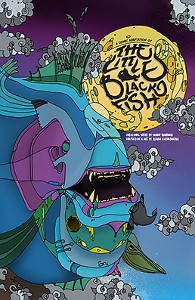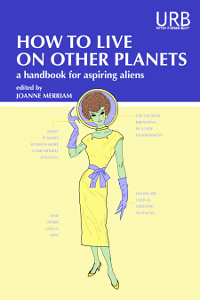 Series: The Oddfits Series, #1
Series: The Oddfits Series, #1
First Published: 1st February, 2016
Genre: Fantasy / Novel
Available: Amazon.com | Amazon UK
Murgatroyd Floyd doesn’t fit in. He’s the only white child at school, has one friend, and nothing ever seems to work out for him. He’s also an Oddfit, able to visit another land called the More Known World. Once he reaches adulthood, a group who explore that world seek him out.
This is a portal story set in a person’s life before the portal. Murgatroyd sees a few glimpses of the More Known World, but it’s mainly not about that. It’s about his life growing up and living in Singapore. It’s also a story with mature themes written in a children’s book style. Both of these things made me interested in reading it. I did like the early part where Murgatroyd is befriending the ice cream seller. Unfortunately, that didn’t last.
Murgatroyd is abused right from the start. It’s not simply that he feels like he doesn’t fit in, but that the people around him actively try to harm him. This starts with his parents, who make sure his first day at school goes badly, then tell him it’s his fault. The abuse continues into adulthood, where they keep all his earnings, to be sure he doesn’t gain any independence.
The other people in his life are only marginally better. His employer sees him more as a novelty possession to make her restaurant look good, and his best friend is selfish. It only counts as better because they don’t spend as much time with Murgatroyd, so the damage they do is limited compared to his parents.
As the abuse continued, I was increasingly uncomfortable with how it was handled. At first, the tone feels as though the reader is supposed to laugh at the things happening to Murgatroyd. I wasn’t laughing. Later on, this abuse is blamed on the Known World reacting to Murgatroyd being an Oddfit. In other words, blame for the abuse is shifted away from the abusers. They couldn’t help it. Murgatroyd was just different and they had to treat him like that. Which is disturbingly close to how people try to minimise abuse against non-neurotypical children.
There are interesting elements to the story. The idea of the More Known World, and the parts shown of it, was potentially fascinating. It looks set for the series to make some different choice in terms of plot, compared to the usual portal story. Where it falls down is the challenge of making someone’s pre-portal life as exciting as the world on the other side. I don’t feel this book managed it. There wasn’t a whole lot of plot, so it was stretched very thin. There’s a lot of padding, such as the multiple paragraphs taken up listing out food items.
There are some things that may be an issue for readers. There are a few casual bigoted comments made, generally by characters (though some are in the narration). Examples are bystanders fat shaming people, Murgatroyd’s parents using binary gender assumptions as a weapon, and calling an unhealthy home environment schizophrenic. There are also some detailed descriptions of killing animals, as the restaurant where Murgatroyd works slaughters animals as a public entertainment. Basically, the book isn’t as fluffy as it might appear on a quick read of the opening, so go into it knowing that.
I liked some parts of the book enough that I might read the next one. This acted as a prologue more than anything, and it might be the aspect of abusers not being able to help abusing will be subverted later. It’s difficult to tell at this point, as a lot of the nature of the More Known World wasn’t explained. I’d also hope the next book picks up the pace, now that the world and the main players are introduced. This is a book that had potential, but never quite reached it.
[A copy of this book was received from the publisher for review purposes]
 Alternate Titles: Brightwood
Alternate Titles: Brightwood
 First Published: 15th March, 2016
First Published: 15th March, 2016 First Published: 16th February, 2015
First Published: 16th February, 2015